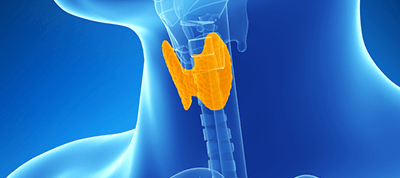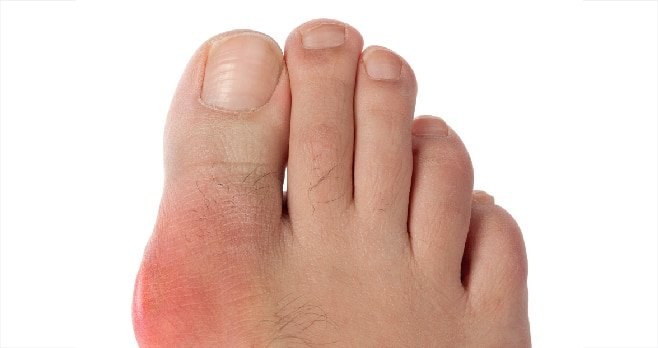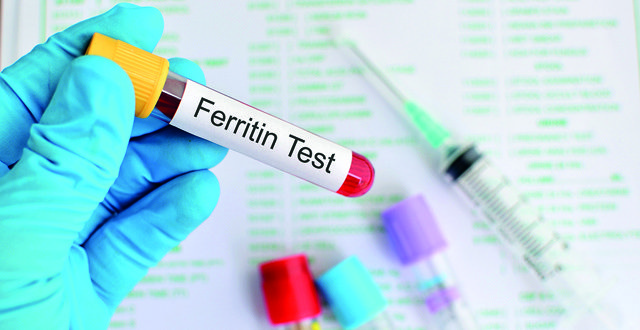<p class=”subheadMIstyles”> <div style=”background: #e8edf0; padding: 10px 15px; margin-bottom: 15px;”>
<strong>Case report</strong>
A 62-year-old man was referred to the endocrinology service by his GP with features suggestive of acromegaly. He was complaining of a two-year long history of excessive sweating, generalised joint pains and headaches. He also noted enlarging hands and feet with tightness of his wedding ring requiring it to be cut. On examination, he was hypertensive with a blood pressure of 160/95mmHg. He had coarsening facial features, frontal bossing, a large nose and tongue and a protruding jaw with teeth spacing. His hands and feet were enlarged and he had multiple skin tags. Routine blood tests were unremarkable apart from a raised fasting blood glucose level of 7.9mmol/l. Insulin growth factor 1 (IGF-1) was elevated for age and gender matched level at 759ng/ml (54-199). Following a glucose challenge using the oral glucose tolerance test (OGTT) revealed a nadir growth hormone (GH) of 4.8mcg/l (normal suppression < 0.4mcg/l) and confirmed the diagnosis of diabetes mellitus. Anterior pituitary function was otherwise normal. An MRI of the pituitary showed a 2.2cm pituitary adenoma. Echocardiogram showed left ventricular hypertrophy and a colonscopy showed two hyperplastic polyps.
Transsphenoidal pituitary exploration revealed an adenoma, which was removed. Six weeks post-surgery, his symptoms significantly improved, but a repeat OGTT showed a GH nadir of 1.4mcg/L and an IGF-1 level twice the upper limit of normal, which remained raised at three months. The rest of his pituitary function was normal. Repeat MRI pituitary also showed a small residual tumour. He was then commenced on Lanreotide autogel (a somatostatin analogue) with resolution of his symptoms and normalisation of IGF-1/GH levels.
He continues to have regular follow-up in the endocrinology department with monitoring of IGF-1, GH and routine endocrine tests.
</div>
<h3 class=”subheadMIstyles”>Definition and Incidence</h3>
Acromegaly is a chronic hormonal disorder resulting from excess production of GH by a pituitary adenoma in the overwhelming majority of cases. If the condition starts in childhood/adolescence, prior to epiphyseal growth plate closure, gigantism may occur. GH induces synthesis of peripheral IGF-I, mainly by the liver, which mediates most of the action of GH and is invariably raised in active acromegaly.
Previously, the incidence of acromegaly was reported as 3.3 cases per million with a prevalence of 60 per million. In more recent studies variable rates have been reported ranging from 3.8 to 11 cases per million. The prevalence is also variable, reported as 78 cases per million in the US and 133 cases per million in Iceland.
<h3 class=”subheadMIstyles”>Clinical features</h3>
Acromegaly presents insidiously over several years with a mean duration from onset of symptoms to diagnosis of five years, but can be as long as 20 years or more. Patients may present to their clinician with some of the clinical features presented in <strong>Table 1</strong>. The median age of onset of acromegaly is in the fifth decade of life with equal prevalence between the sexes.
At time of diagnosis over two-thirds of tumours are pituitary macroadenomas (>1cm in size). Although the majority of cases of acromegaly are sporadic (90-95 per cent), a certain number of cases can occur as a feature of familial syndromes associated with genetic mutations such as McCune-Albright syndrome, Carney complex, familial isolated pituitary adenomas and multiple endocrine neoplasia 1 (MEN-1).
<h3 class=”subheadMIstyles”>Diagnosis</h3>
The standard diagnostic test for acromegaly is the oral glucose tolerance test (OGTT). Physiologically, glucose suppresses GH, but when GH is produced autonomously by a tumour then it fails to suppress adequately after the glucose challenge. Normal suppression is assay dependant with values ranging from 0.4-to-1mcg/ml and ideally should be locally established. Serum IGF-1 levels are invariably raised and help to confirm the diagnosis in the right clinical context. Pituitary MRI will show an adenoma in the majority of cases.
<h3 class=”subheadMIstyles”>Treatment</h3>
The goal of therapy in acromegaly is to normalise the mortality and reduce morbidity by removing the tumour and normalising the GH/IGF-1 levels, whilst ideally maintaining a normal pituitary function. Controlled disease is now widely defined as a basal or mean GH of less than 1mcg/l (safe GH level) and a normal age adjusted serum IGF-1 level. There are several treatment options available and these are sometimes used in combination.
<h3 class=”subheadMIstyles”>Neurosurgical treatment</h3>
Most endocrinologists agree that the first-line treatment for acromegaly should be transsphenoidal hypophysectomy by an experienced dedicated pituitary surgeon. The main contributors to surgical outcomes include the size of the tumour, anatomical extension and surgical expertise. Patients with microadenomas are more likely to achieve remission than patients with macroadenomas. On average, approximately 80 per cent of microadenomas achieve remission post-operatively compared to about 50 per cent of macroadenomas.
<h3 class=”subheadMIstyles”>Medical treatment</h3>
Medical treatment is usually used as second-line therapy, but can also be used as a primary treatment in acromegaly selected patients. There are three mainstays of medical treatment for acromegaly: somatostatin receptor (SSTR) analogues, dopamine agonists (DAs) (mainly cabergoline) and the GH receptor antagonist pegvisomant. The main indications for medical therapy include: as an adjunct to surgery, failure of surgery alone to control the disease, patient choice and for patients who are not surgical candidates. Lanreotide autogel and octreotide LAR are long-acting SSTR analogues, which are available in injectable monthly formulations. Both DAs and SSTR analogues suppress GH production by the tumour although the latter is more powerful and more likely to achieve control and tumour shrinkage in some cases. Pegvisomant is a GH receptor antagonist, which is used as a second-line medical therapy. It can be used as monotherapy or in combination with SSTR analogues or DAs. With modern acromegaly therapy, achievement of controlled GH and or IGF-1 secretion is possible in the overwhelming majority of cases.
<h3 class=”subheadMIstyles”>Pituitary radiotherapy</h3>
While commonly used in the past to treat acromegaly, pituitary radiotherapy is now considered as a third-line option following surgery and medical therapy. Two forms of radiotherapy that may be utilised include conventional fractionated radiotherapy and stereotactic radiosurgery. Although long-term control rates appear similar (approximately 80 per cent), stereotactic radiosurgery is the preferred form in treating acromegalic patients because of less time to reach remission and a possibly lower incidence of post-radiotherapy hypopituitarism. Radiotherapy works slowly and usually takes a number of years to achieve control. Therefore, patients will need to continue medical therapy after radiotherapy until control is achieved. The main complication of radiotherapy is hypopituitarism and a small risk of the development of secondary tumours (mainly meningiomas).
<h3 class=”subheadMIstyles”>Other considerations</h3>
Aggressive management of other co-morbidities is essential. Patients should be managed with cardiovascular targets similar to those of high-risk cardiac/stroke patients for blood pressure, glycaemic control and lipid targets. Identification and management of obstructive sleep apnoea is important. Screening colonoscopy should be performed at diagnosis and follow-up repeat endoscopy arranged for those with colonic polyps. Hypopituitarism should be identified and managed according to modern pituitary replacement therapy guidelines.
<h3 class=”subheadMIstyles”>Prognosis</h3>
Uncontrolled acromegaly is known to confer an increased morbidity and mortality. Morbidity is related to effects of both GH and local effects as described in <strong>Table 1</strong>. It is imperative to aggressively manage comorbidities in patients with acromegaly. The leading causes of death in patients with uncontrolled acromegaly are cardiomyopathy, stroke and respiratory disease. There is also a probable increase in the risk of malignancy, in particular bowel cancer, hence the need for screening colonoscopies. Older studies showed significantly higher standardised mortality ratios (SMRs) for acromegaly of between two-to-three, while more recent data suggests an improvement with SMRs that are now only slightly increased or even normal. This probably reflects better control of GH/IGF-1 levels and more aggressive management of co-morbidities such as hypertension, diabetes, cardiomyopathy and hypopituitarism. Overall, patients with controlled GH/IGF-1 levels appear to have an SMR similar to that of the background population.
<h3 class=”subheadMIstyles”>Conclusion</h3>
Acromegaly is a rare endocrinological disorder of excess autonomous GH secretion that affects many systems and may go undiagnosed for several years. Uncontrolled disease is associated with increased morbidity and mortality. The aim of treatment in this disease is to normalise morbidity and mortality by controlling GH/IGF-1 production.
In most cases the first-line of treatment is transsphenoidal surgery followed by medical treatment if the disease remains active. Aggressive management of comorbidities is imperative for a good outcome.
<p class=”referencesonrequestMIstyles”><strong>References on request</strong>









Leave a Reply
You must be logged in to post a comment.